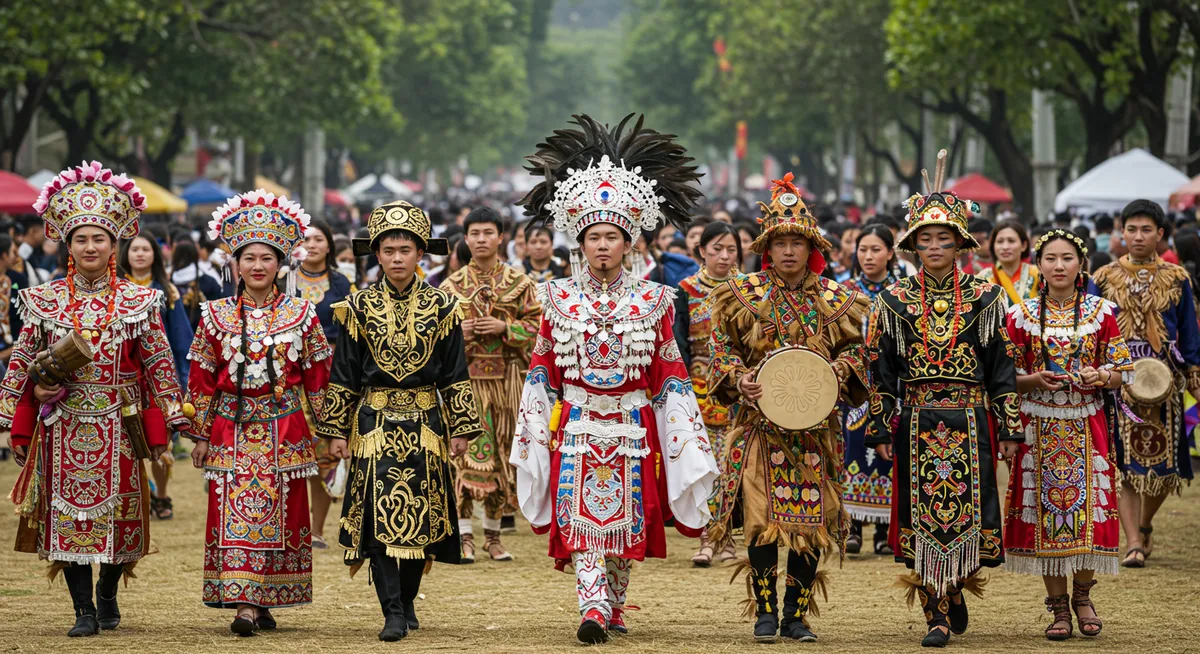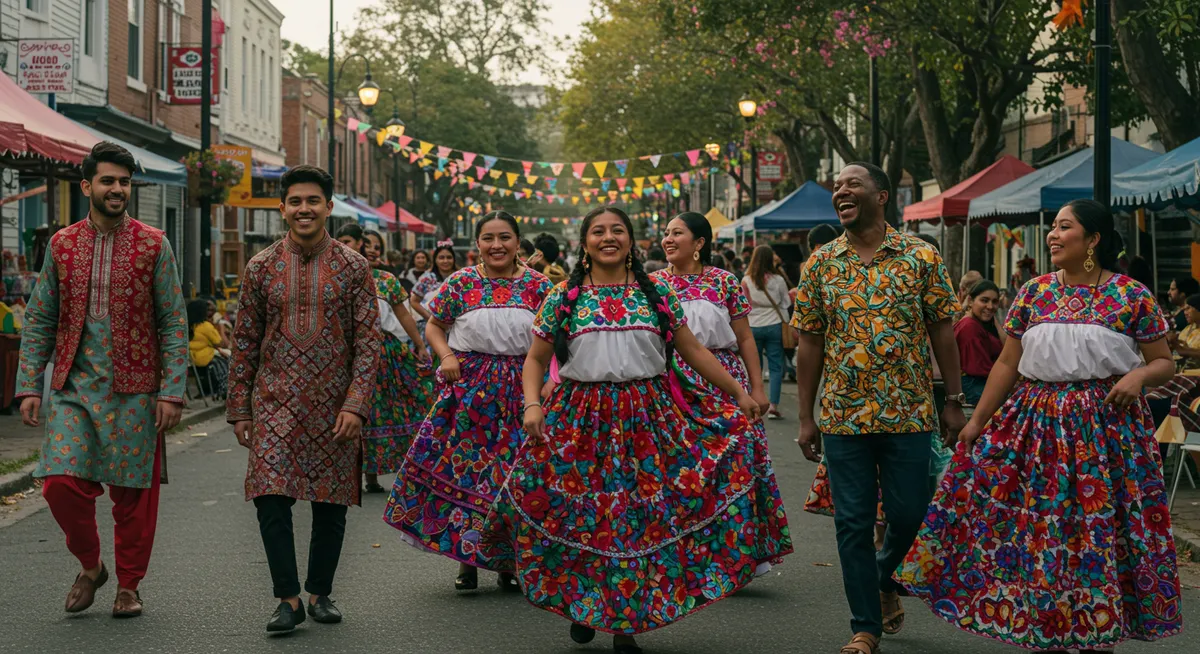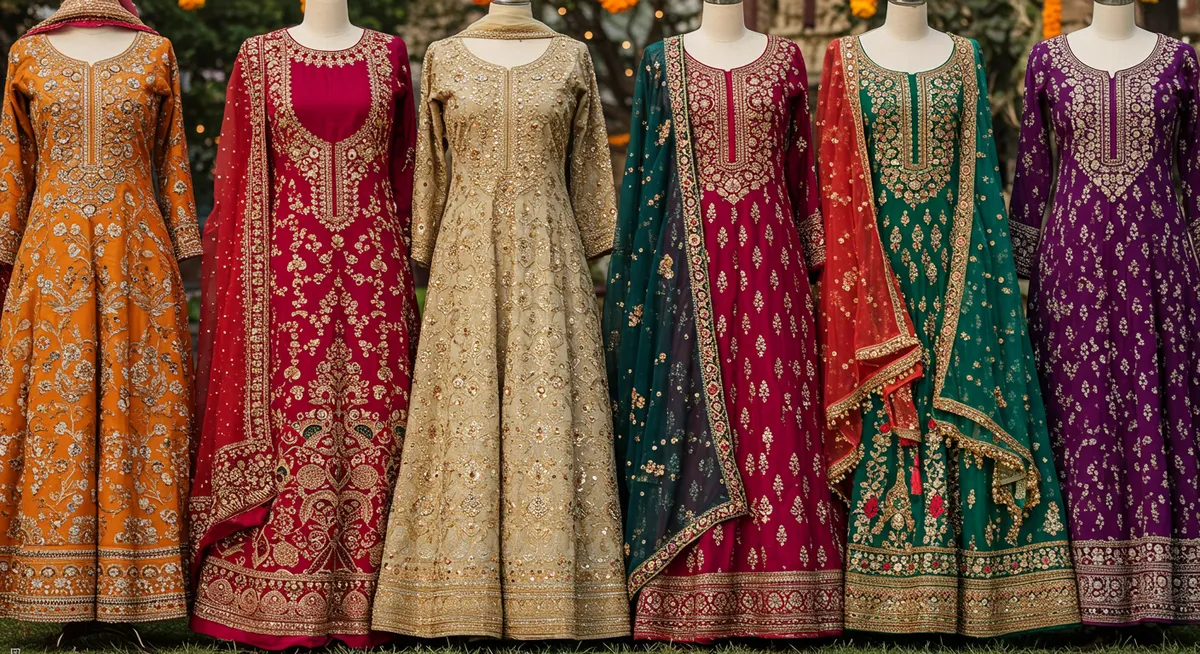Traditional Dress & Costume Guide | Cultural Garment Experiences

Traditional Dress & Costume: Wearable Cultural Heritage
Traditional garments represent some of the most visually stunning and personally meaningful expressions of cultural identity. Beyond their aesthetic appeal, traditional dress and ceremonial costumes encode complex social meanings, historical narratives, spiritual beliefs, and technical innovations developed over generations. This guide explores the extraordinary diversity of traditional garments worldwide and examines how travelers can engage meaningfully with living textile traditions through workshops, museum experiences, festival participation, and ethically-conscious collecting.

The Cultural Significance of Traditional Dress
Traditional garments serve multiple functions beyond mere clothing, carrying layers of meaning and identity:
- Social Communication: Traditional dress often indicates marital status, age, social position, and community affiliation
- Environmental Adaptation: Garments represent generations of knowledge about surviving in specific climates and terrain
- Symbolic Expression: Colors, patterns, and embellishments communicate spiritual beliefs and cultural narratives
- Technical Innovation: Traditional textiles showcase sophisticated techniques like ikat, batik, and complex weaving methods
- Identity Preservation: Continuing garment traditions helps maintain cultural distinctiveness amid globalization
Categories of Traditional Garments and Costumes
The diverse world of traditional dress can be understood through several major categories:
Daily Traditional Dress
Everyday garments that maintain cultural identity through regular wear:
- Regional Daily Wear: Garments like Scottish kilts, Indian saris, Japanese kimonos, or Indonesian sarongs worn in everyday settings
- Work-Specific Clothing: Specialized dress for occupations like fishing, farming, or crafts that blend function with cultural identity
- Climate-Adapted Garments: Traditional clothing developed to protect against extreme environments, from Arctic parkas to desert robes

Ceremonial and Ritual Attire
Special garments worn for important cultural and spiritual occasions:
- Wedding Costumes: Elaborate marriage attire like Chinese qipao, Norwegian bunad, or Mexican wedding dresses
- Coming-of-Age Garments: Special clothing that marks transitions from childhood to adulthood across cultures
- Religious Ceremonial Dress: Attire for spiritual leaders and participants during religious observations and sacred ceremonies
- Funeral and Mourning Dress: Specialized garments that express grief and honor the deceased
Festival and Performance Costumes
Dramatic attire designed for public celebration and artistic expression:
- Carnival and Masquerade Costumes: Elaborate outfits from traditions like Venice Carnival, Brazilian Carnaval, or Caribbean festival wear
- Dance Performance Attire: Specialized garments for traditional dance forms that enhance movement and visual impact
- Seasonal Celebration Dress: Costumes specific to harvest festivals, winter celebrations, or spring renewal ceremonies
- Historical Reenactment Garments: Accurately reconstructed clothing from significant periods in a culture's history
Status and Identity Markers
Garments and accessories that communicate social position and cultural affiliation:
- Royal and Noble Dress: Garments indicating high status through luxurious materials and restricted symbols
- Tribal and Clan Identifiers: Patterns, colors, or accessories that distinguish between related cultural groups
- Age and Life-Stage Signifiers: Clothing elements that change as individuals move through different life phases
- Occupational Identifiers: Traditional garments specific to certain professions or societal roles
Regional Costume Traditions
Traditional dress reflects distinct cultural heritages, environmental adaptations, and historical influences:
East and Southeast Asian Dress Traditions
Sophisticated textile arts combining technical excellence with symbolic meaning:
- Japanese Textile Arts: Kimono tradition featuring sophisticated dyeing techniques, seasonal motifs, and strict wearing protocols
- Chinese Regional Dress: Diverse ethnic minority costumes like Miao silver headdresses and Yi embroidery alongside Han traditions
- Korean Hanbok: Harmonious garments with distinctive silhouettes emphasizing movement and color symbolism
- Southeast Asian Batik and Ikat: Advanced resist-dyeing techniques creating textiles with spiritual and narrative significance
South Asian Textile and Costume Traditions
Rich textile heritage featuring elaborate handwork and regional variations:
- Indian Sari Traditions: Regional variations in draping styles, weaving techniques, and motifs across the subcontinent
- Himalayan Highland Dress: Tibetan, Bhutanese, and Nepalese garments featuring protective layers, rich symbolism, and distinctive jewelry
- Pakistani and North Indian Embroidery: Vibrant thread and mirror work traditions like phulkari, shisha, and chikankari
- Sri Lankan Ceremonial Attire: Kandyan wedding dress and dance costumes featuring distinctive materials and construction

African Textile and Adornment Traditions
Vibrant textile arts celebrating identity, status, and aesthetic innovation:
- West African Woven Textiles: Kente cloth from Ghana, strip-woven country cloth from Sierra Leone, and indigo-dyed adire from Nigeria
- North African Ceremonial Dress: Moroccan caftan tradition, Tuareg indigo veiling, and Egyptian ceremonial garments
- East African Beadwork: Maasai and Samburu adornment traditions communicating age, status, and cultural identity
- Southern African Ceremonial Attire: Zulu beadwork, Ndebele painted patterns, and ceremonial marriage blankets
European Folk Costume Traditions
Regional dress preserving local identity through distinctive styles:
- Scandinavian Folk Dress: Elaborately embroidered Norwegian bunads, Swedish regional costumes, and Sami ceremonial garments
- Eastern European Costume: Richly decorated garments from Ukraine, Romania, Hungary, and the Balkans featuring symbolic protection motifs
- Mediterranean Traditional Dress: Regional variations from Portuguese fishermen's wear to Greek island costumes and Italian festival dress
- Alpine and Central European Attire: Distinctive dress from Swiss cantons, Bavarian tracht, and Tyrolean costume traditions
Indigenous American Dress Traditions
Garments expressing cultural resilience and spiritual connections:
- North American Ceremonial Regalia: Powwow dance outfits, jingle dresses, and specialized ceremonial attire from diverse Nations
- Mesoamerican Textile Arts: Maya huipiles, Zapotec weaving traditions, and ceremonial garments with cosmological symbolism
- Andean Textile Techniques: Distinctive weaving traditions from Quechua and Aymara communities featuring complex iconography
- Arctic Traditional Clothing: Inuit and Yupik fur garments utilizing sophisticated cold-weather technologies
Middle Eastern and Central Asian Dress
Rich textile traditions reflecting nomadic heritage and diverse cultural influences:
- Bedouin and Desert Attire: Practical yet distinctive clothing adaptations for harsh desert environments
- Persian Ceremonial Dress: Elaborate garments featuring sophisticated embroidery and historical continuity
- Central Asian Nomadic Costume: Kazakh, Kyrgyz, and Uzbek garments featuring protective motifs and prestige materials
- Levantine Traditional Dress: Regional variations from Palestinian tatreez embroidery to Lebanese and Syrian ceremonial attire
Experiencing Living Costume Traditions
For travelers seeking meaningful engagement with traditional dress, several approaches offer authentic experiences:
Traditional Textile Workshops and Classes
Hands-on learning experiences with master artisans:
- Weaving Workshops: Learn backstrap, floor loom, or tapestry techniques from traditional weavers
- Embroidery and Needlework Classes: Practice regional stitching methods and pattern creation
- Natural Dyeing Experiences: Discover plant-based coloring techniques and traditional dye recipes
- Costume Construction Lessons: Study the assembly and proper wearing of complete traditional garments
Costume Museums and Heritage Centers
Institutions dedicated to preserving and interpreting dress traditions:
- Ethnographic Collection Tours: Expert-guided experiences explaining contexts and significance of traditional garments
- Conservation Demonstrations: Witness the techniques used to preserve historic textiles
- Replica and Reproduction Experiences: Interactive opportunities to handle and sometimes try on accurate replicas
- Documentation and Research Facilities: Access to archives and resources for deeper understanding
Festival Costume Experiences
Opportunities to witness garments in their traditional contexts:
- Cultural Festival Attendance: Observe complete traditional dress ensembles during authentic celebrations
- Costume Parades and Processions: Special events highlighting regional dress variations
- Seasonal Costume Exhibitions: Displays timed to correspond with traditional wearing periods
- Cultural Performance Viewing: Witness dance and theatrical traditions featuring traditional costumes often accompanied by ceremonial foods and festival cuisine

Ethical Costume Acquisition and Appreciation
Approaches for respectfully collecting traditional textiles:
- Artisan Cooperatives: Purchase directly from weaver and embroidery collectives ensuring fair compensation
- Certified Heritage Products: Items with geographic indication protection or cultural authenticity verification
- Contemporary Adaptations: Modern pieces created by cultural practitioners blending tradition with innovation
- Vintage and Antique Textiles: Ethical sourcing of historic pieces with clear provenance information
Preparing for Traditional Dress Experiences
Meaningful engagement with costume traditions requires thoughtful preparation:
Cultural Research
Building context enhances appreciation and ensures respectful interaction:
- Historical Background: Understanding how costume traditions developed in specific cultural contexts
- Symbolic Literacy: Learning to "read" the messages embedded in patterns, colors, and design elements
- Regional Variations: Recognizing subtle differences that distinguish local dress traditions
- Proper Terminology: Learning correct names for garment components and techniques
Practical Considerations
Logistical planning ensures meaningful experiences:
- Festival Calendars: Research optimal times to witness traditional dress in ceremonial contexts
- Workshop Reservations: Many textile learning experiences require advance booking
- Photography Guidelines: Learn appropriate protocols for documenting traditional dress
- Transportation Planning: Many textile traditions flourish in remote villages requiring special travel arrangements
Appropriate Engagement
Prepare for respectful interaction with dress traditions:
- Wearing Guidelines: Understand when trying on traditional garments is welcome versus inappropriate
- Language Preparation: Learn basic textile-related vocabulary in local languages
- Gift Considerations: Appropriate offerings when visiting artisan communities
- Skill Assessment: Realistic evaluation of your ability level for workshop participation
Ethical Considerations in Traditional Dress Tourism
Approaching costume traditions with cultural respect ensures positive interactions:
- Intellectual Property Recognition: Acknowledge the cultural ownership of designs, techniques, and patterns
- Fair Compensation: Pay appropriately for artisan work, recognizing the skill and time involved
- Avoid Costume "Dress-Up": Distinguish between respectful wearing of everyday garments versus ceremonial attire
- Photography Consent: Seek permission before photographing individuals in traditional dress
- Support Preservation Efforts: Consider contributing to textile heritage conservation initiatives
The Cultural Impact of Traditional Dress Experiences
Engaging with costume traditions creates meaningful connections and supports cultural continuity:
- Artistic Appreciation: Developing nuanced understanding of textile arts as significant cultural expressions
- Economic Support: Helping maintain economically viable contexts for traditional skills to flourish
- Cross-Cultural Connection: Building relationships based on shared appreciation for craftsmanship
- Knowledge Preservation: Supporting the documentation and continuation of endangered textile traditions
- Personal Skill Development: Acquiring hands-on understanding of traditional techniques
Traditional dress and ceremonial costumes represent some of humanity's most beautiful cultural expressions, combining aesthetic creativity with deep social meaning and technical innovation. When approached with appropriate respect and genuine interest, these textile traditions offer travelers profound insights into cultural values and identities. Through thoughtful engagement with museum collections, artisan workshops, festival celebrations, and community initiatives, visitors can help support the continued vitality of these living heritage practices.
Ready to explore traditional dress and costume traditions?
Discover opportunities to engage with living textile heritage through workshops, cultural festivals, and ethical collecting practices worldwide.
Check back soon for our upcoming spotlights on specific costume traditions, including Himalayan ceremonial dress, West African textile arts, and European folk costume revival movements.
Explore More Cultural Experiences
Discover other ways to deeply engage with traditional cultural practices around the world:
Traditional Festival Foods
Taste authentic cuisines and discover the cultural heritage behind ceremonial and celebration foods worldwide.
Sacred Ceremonies & Local Rituals
Learn how to respectfully participate in spiritual traditions that connect communities to their ancestral heritage.
Heritage Sites & Traditional Dances
Experience how traditional performances bring historical places to life through movement and music.
All Cultural Immersion Experiences
Return to our main guide on transformative cultural experiences that go beyond festival attendance.